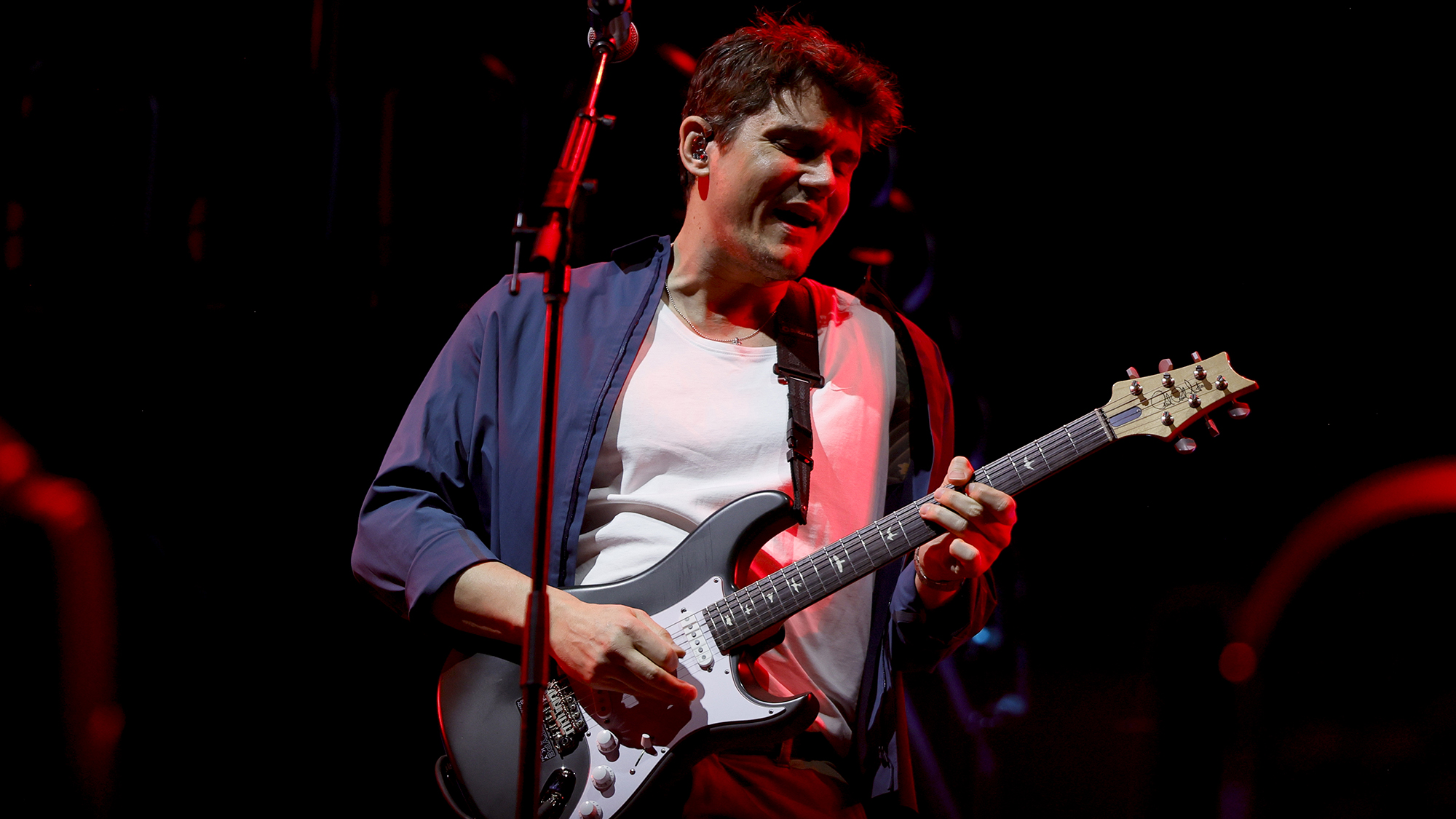Battle for the bass: the story of Fender and Gibson's fight for low-end supremacy
Gibson’s Mat Koehler and Fender historian Terry Foster on how two industry titans went head-to-head in search of the ultimate electric bass
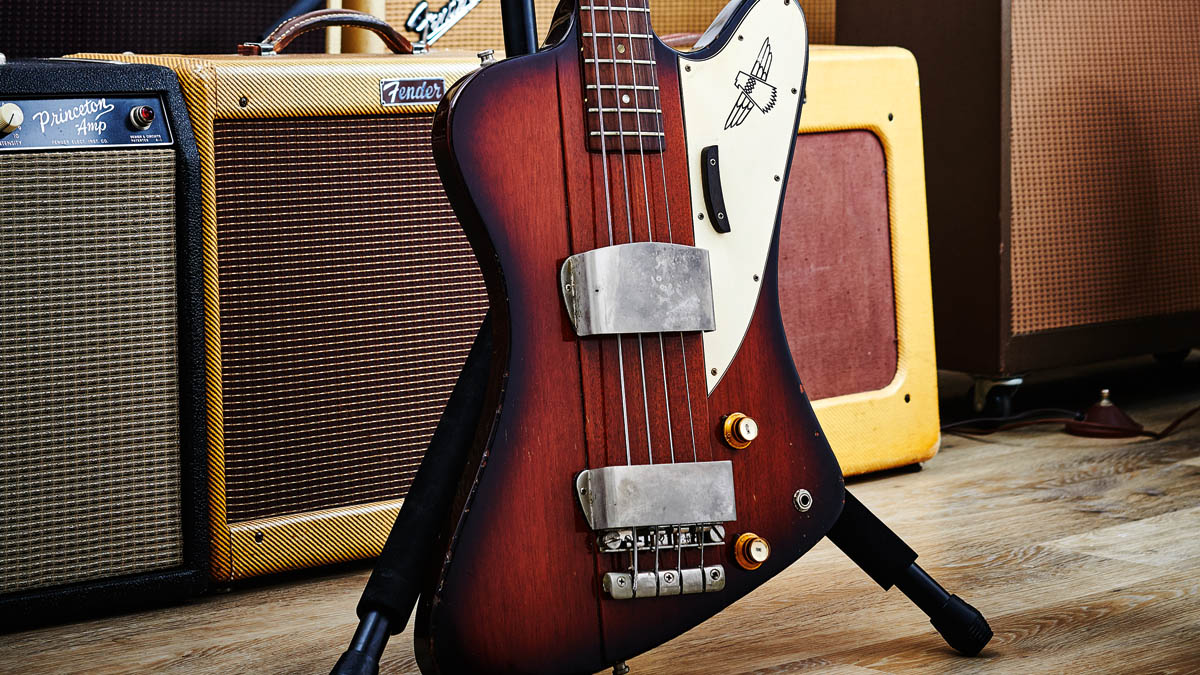
The post-war period of the early 50s was a time of great innovation. Following major advancements in instrument design after the war, radical developments at Fender saw the release of both the seminal Esquire and Broadcaster by 1950 (renamed the Telecaster in 1951).
In 1952, Gibson’s Les Paul Model similarly heralded the beginning of a new era in guitar building. As creativity flowed between musicians and guitar builders alike, popular culture and music technology moved forward in tandem and a new style of instrument began to take shape, beginning with Fender’s Precision Bass in 1951, followed by the Gibson Electric Bass or EB-1 in 1953.
As the decade progressed, the electric guitar industry’s biggest rivals – Gibson in the east, Fender in the west – began battling it out for their stake in the expanding marketplace of electric basses.
Commercially, Gibson was playing catch up with Fender from the start
Terry Foster
“Commercially, Gibson was playing catch up with Fender from the start,” begins Terry Foster, co-author of Fender: The Golden Age 1946-1970.
“In 1950, the Broadcaster and Esquire came out, and in 1952 the Les Paul came out. It was the same thing when the Precision Bass came out in 1951 and then the EB-1 came out in 1953. That’s a large expanse of time. And at that point there wasn’t just the one almighty NAMM trade show twice a year; there were multiple trade shows all over the country. The Gibson representatives would have had a chance to check out those instruments multiple times and see the dealers’ reactions. Then they’d go back and say,‘Okay, guys, we need something as well.’”
“The EB-1 was Gibson’s first foray into electric bass and it was initiated by Fender’s Precision Bass,” confirms Mat Koehler, former proprietor of Santa Monica’s Holy Grail Guitars and now head of Product Development at Gibson.
“The reason they chose the violin shape with the leg extension was because of Les Paul’s influence – the bassist in his trio played an upright bass. They were keenly aware of Fender, but [Gibson president] Ted McCarty didn’t realise exactly what kind of a competition they were in. The EB-1 did not do well. It was not a commercial success. That’s why Gibson later pursued the EB-2 and the EB-0 [released in 1958 and 1959 respectively].
Get The Pick Newsletter
All the latest guitar news, interviews, lessons, reviews, deals and more, direct to your inbox!
“It’s funny, I was just talking to my Epiphone cohorts here about how Ted was still after Epiphone’s upright basses in the late 50s, even when the Precision Bass was pretty standard across the music industry. He did want to counter that with the EB-1 early on, but he was still convinced upright basses were where it’s at. The whole Epiphone thing started because Gibson were pursuing upright basses.
“The craziest story is that when Gibson purchased Epiphone [in 1957], Ted McCarty sent John Huis, his plant manager guy, to New York to evaluate what Epiphone had and oversee the transaction. They both thought they were purchasing Epiphone’s upright bass business only, but when John went over there, he reported back to Ted, ‘They think we’re buying everything – the whole company!’ We still have some of those original memos.”
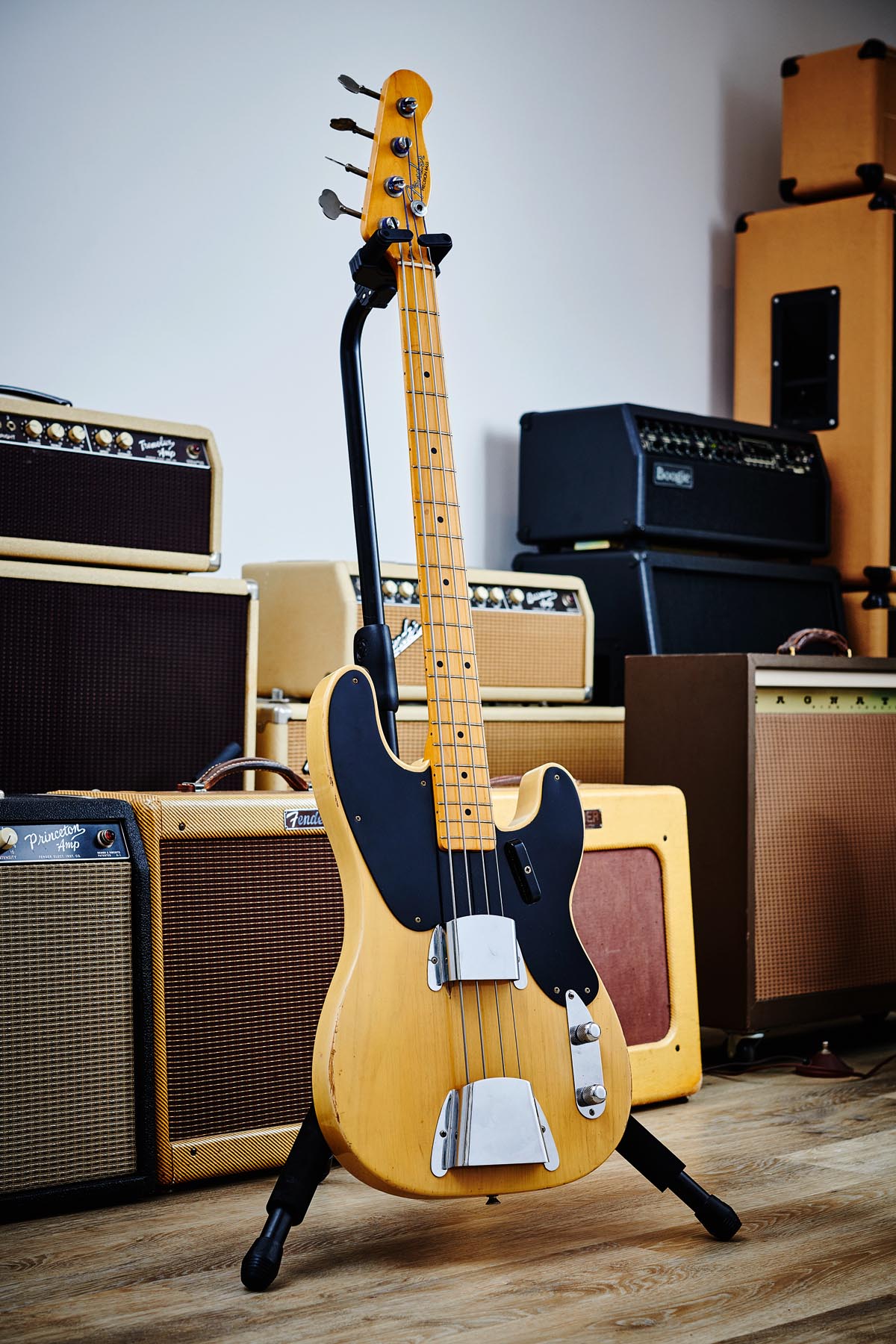
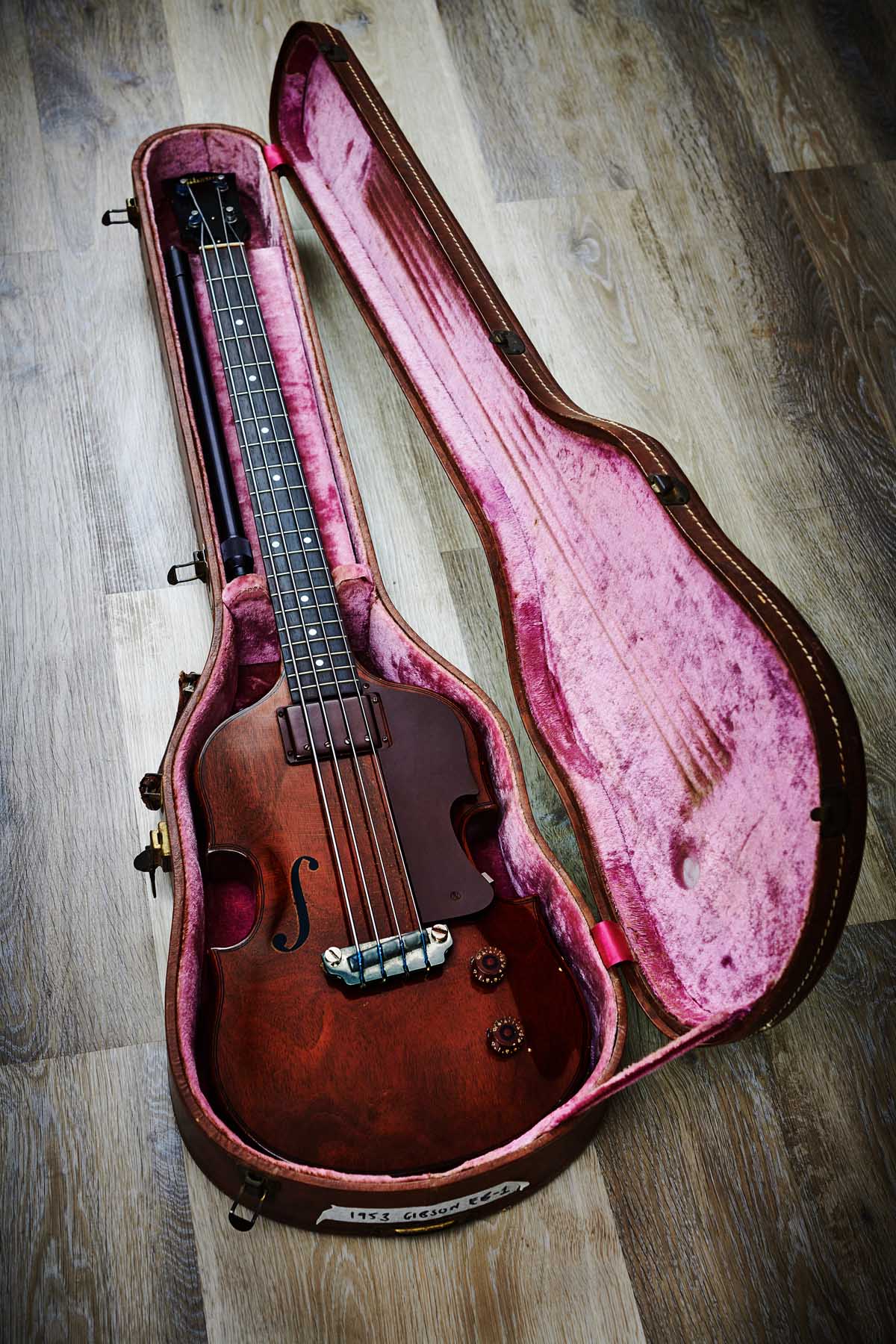
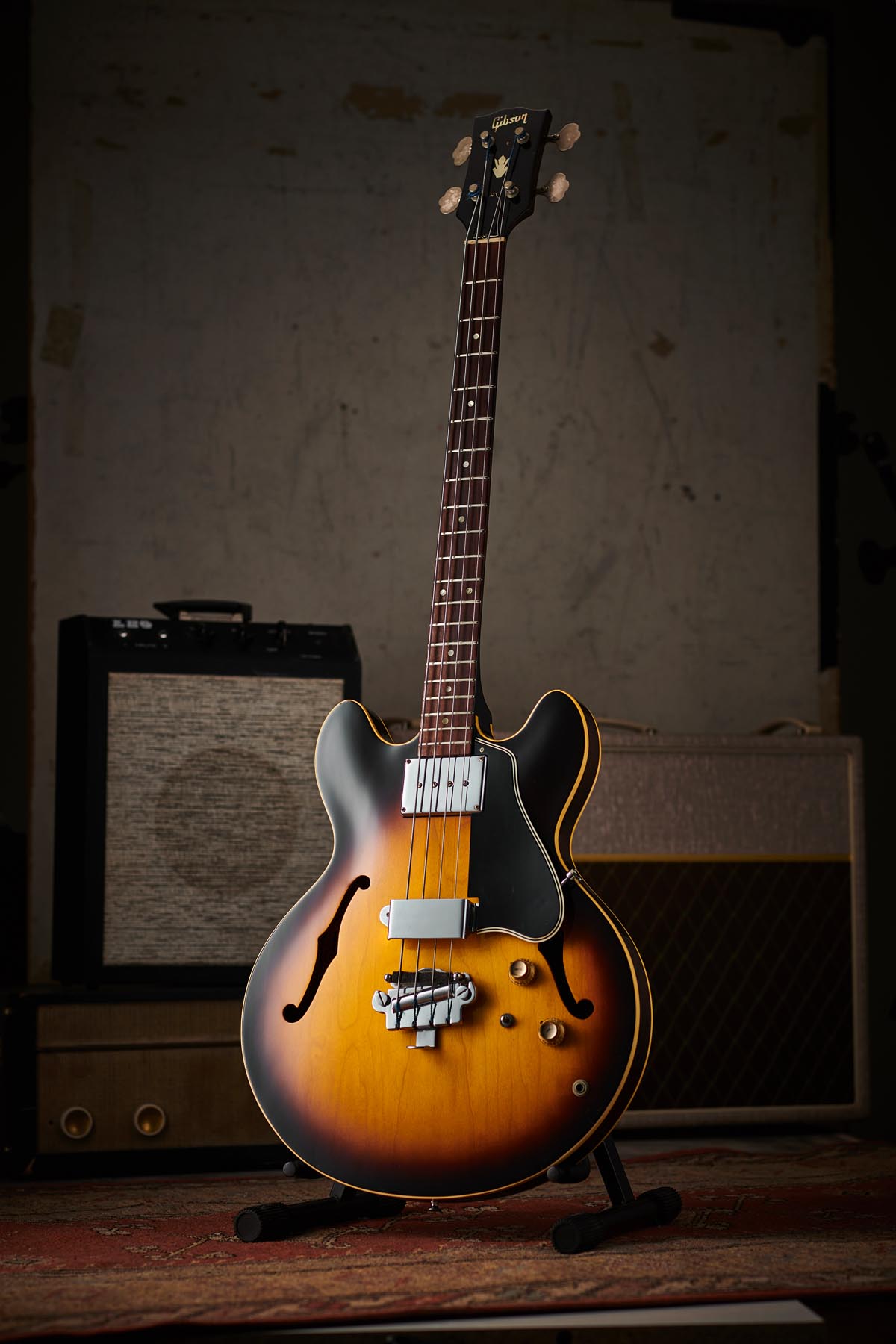
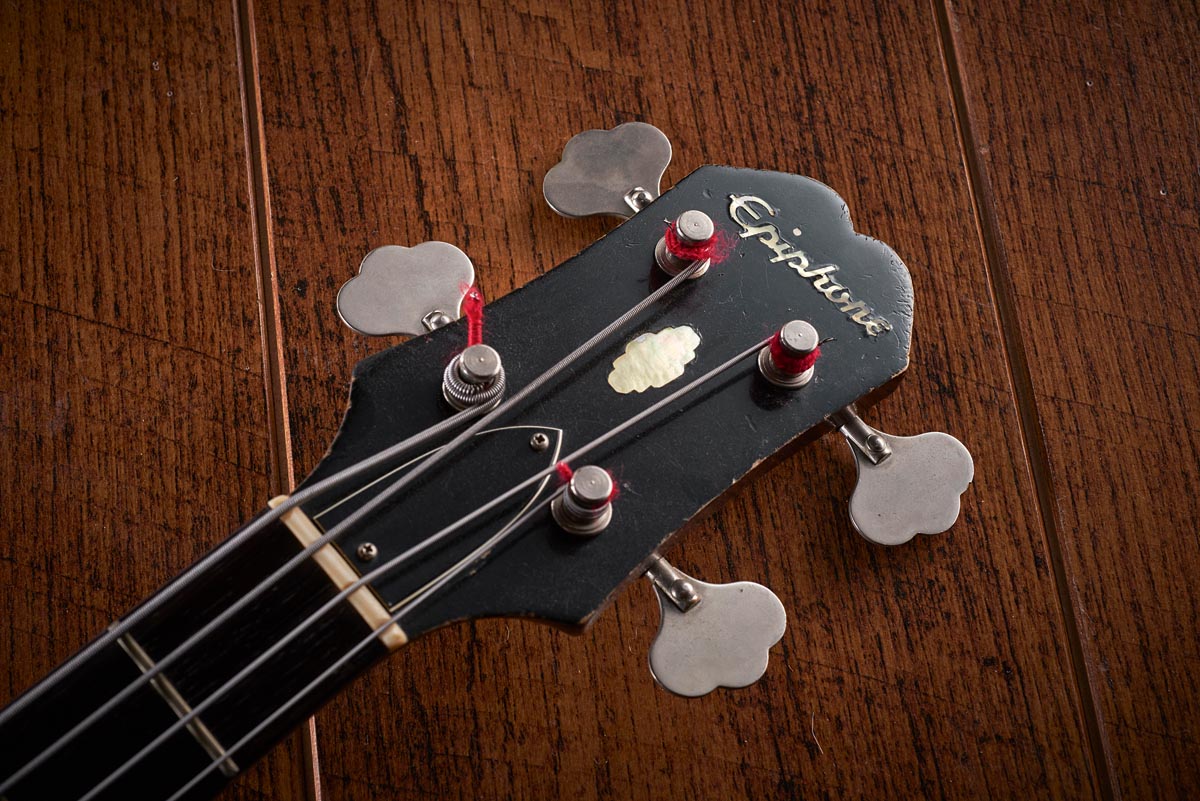
Although the Precision Bass was not the first fretted horizontal electric solidbody bass model on the market, having been preceded by Paul Tutmarc’s pre-war era instruments, its design was a convincing move away from upright basses and marked a watershed in music history.
“Fender weren’t the first to build an electric bass,” concedes Terry. “There are some examples that existed before the P-Bass, but they’re culturally irrelevant. The Tutmarcs were little short-scale things that didn’t play very well, and it’s unlikely that Leo Fender or anyone at the company ever saw one. Leo invented that [34-inch] scale length and virtually every [electric bass] design that followed was derived from the Precision Bass. You could even argue that Leo inventing the Precision Bass had more of a cultural impact than anything else Fender did. It spanned virtually every genre of modern music. It would be hard for someone to argue against that.
You could even argue that Leo inventing the Precision Bass had more of a cultural impact than anything else Fender did
Terry Foster
“It’s part of the soundtrack of the 20th century. In the early days when studios were calling for sessions, they asked for someone to either play ‘bass’, or the ‘Fender bass’, meaning the electric bass – the two things were synonymous.”
“I’m a huge Leo Fender fan,” remarks Mat. “And I think he nailed it on the very first try with the P-Bass. Even from Gibson’s side I would argue that the Precision Bass is the most influential bass design ever. The fact that you didn’t have to lug around an upright bass in your station wagon was a nice plus! It made the bass a lot more accessible for people. It just makes sense.”
“It made perfect sense at the time,” agrees Terry, “given what people were using for bass. It was the perfect solution to hauling around an enormous double bass, and it was a natural extension of the Fender line, especially once they had the ability to quickly scale things up. Don [Randall, Leo’s business partner] was at the trade shows while Leo was in the clubs, and it would have struck them both as being an opportunity.
"People often think of Leo Fender as being nerdy and introverted, but he wasn’t like that at all. He was great at talking to people and he enjoyed getting out there. Being passionate, patient and socially adept enough to have the right conversations with musicians was how a non-musician/designer like Leo navigated that information. Designing it is where the genius comes in.”
Even from Gibson’s side I would argue that the Precision Bass is the most influential bass design ever
Mat Koehler
Not only did the Precision Bass immediately look, sound and feel right to musicians, like so many enduring inventions of the modern era it also solved a few practical problems.
“The Precision Bass was an extremely practical answer to the double bass,” says Terry. “First and foremost, the commercial success of the Precision Bass was due to solving the problems of portability, playability and precision. The name was suggested by Don and came about because it’s fretted, as opposed to the fretless double bass. It’s about precise fretting.
“It’s easy to imagine that when the P-Bass arrived, a lot of people who were playing the double bass thought, ‘Thank God!’ I played the double bass in school and it’s a pain in the ass. It’s as tall as you are and as fat as two men! And you can’t move around much on stage.
“It is a real struggle to play compared to the P-Bass. Plus you can’t be heard easily, especially if the guitars have been amplified – and by that point in time they mostly would have been in one way or another. How do you take a Jaco Pastorius-style lead break in 1950 on one of those double basses?
“I mean, there were obviously guys who could play the shit out of those things, but once people had the tool that relieved all of those problems, things changed big-time."
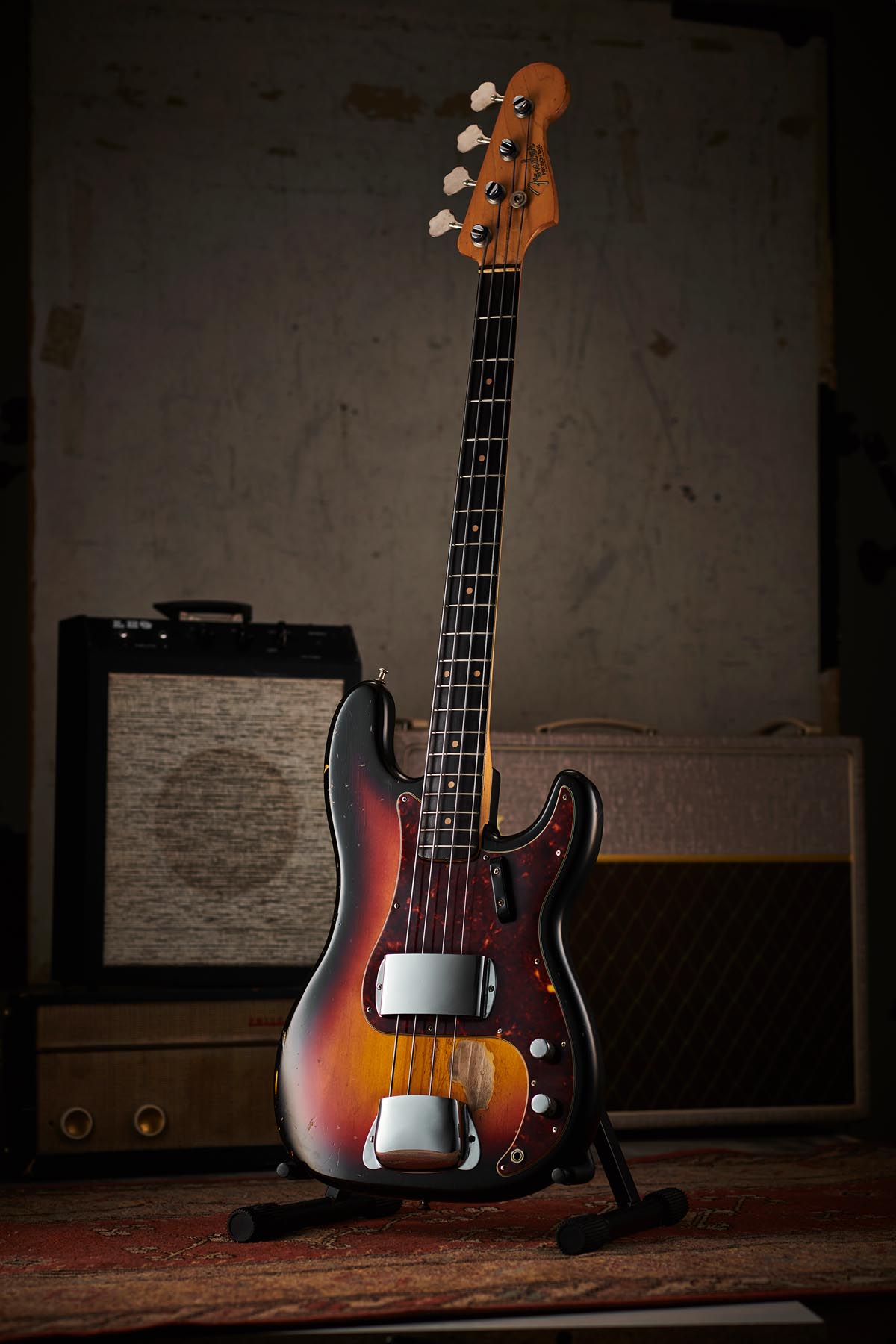
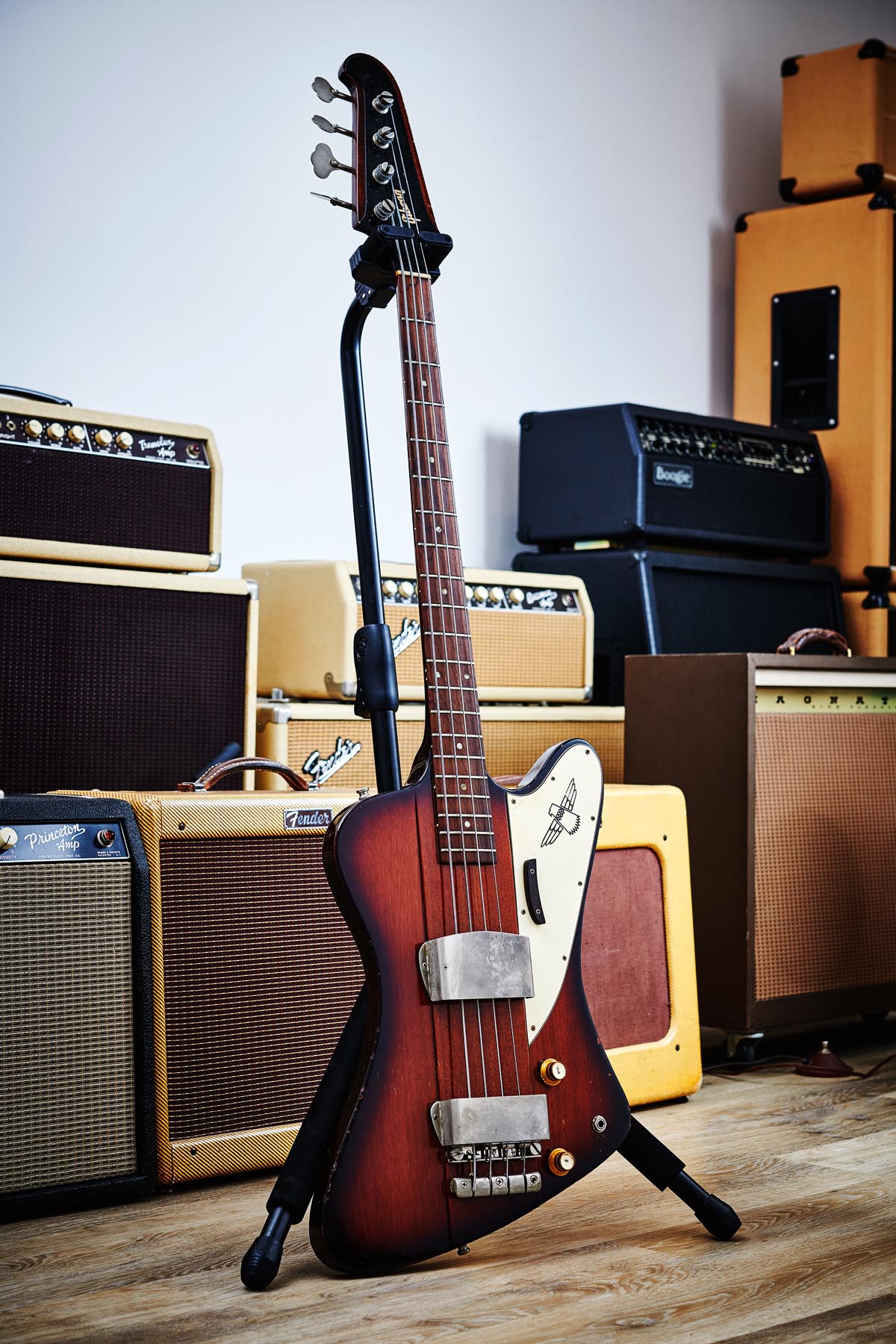
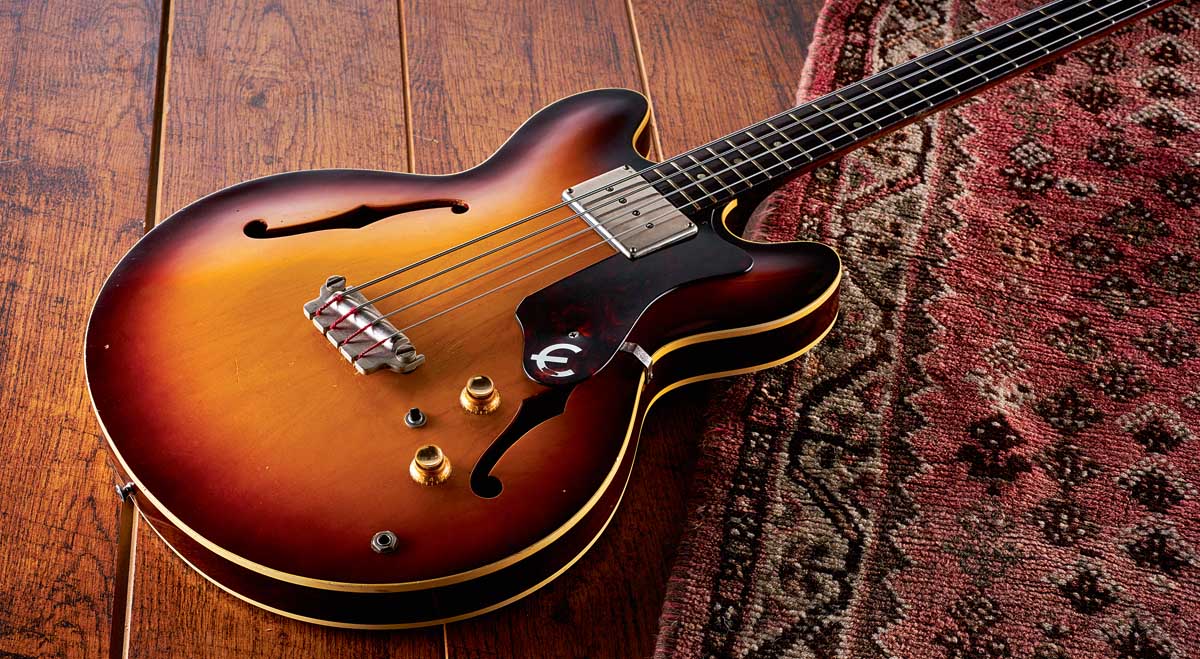
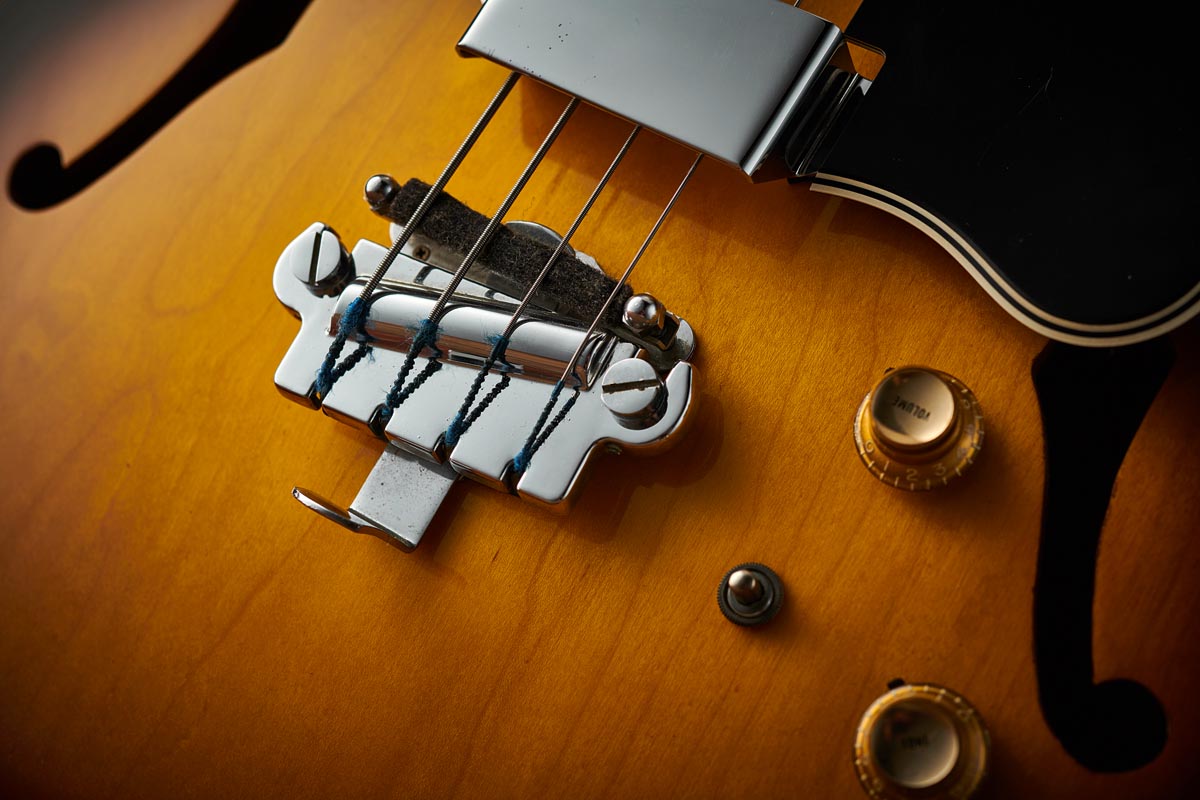
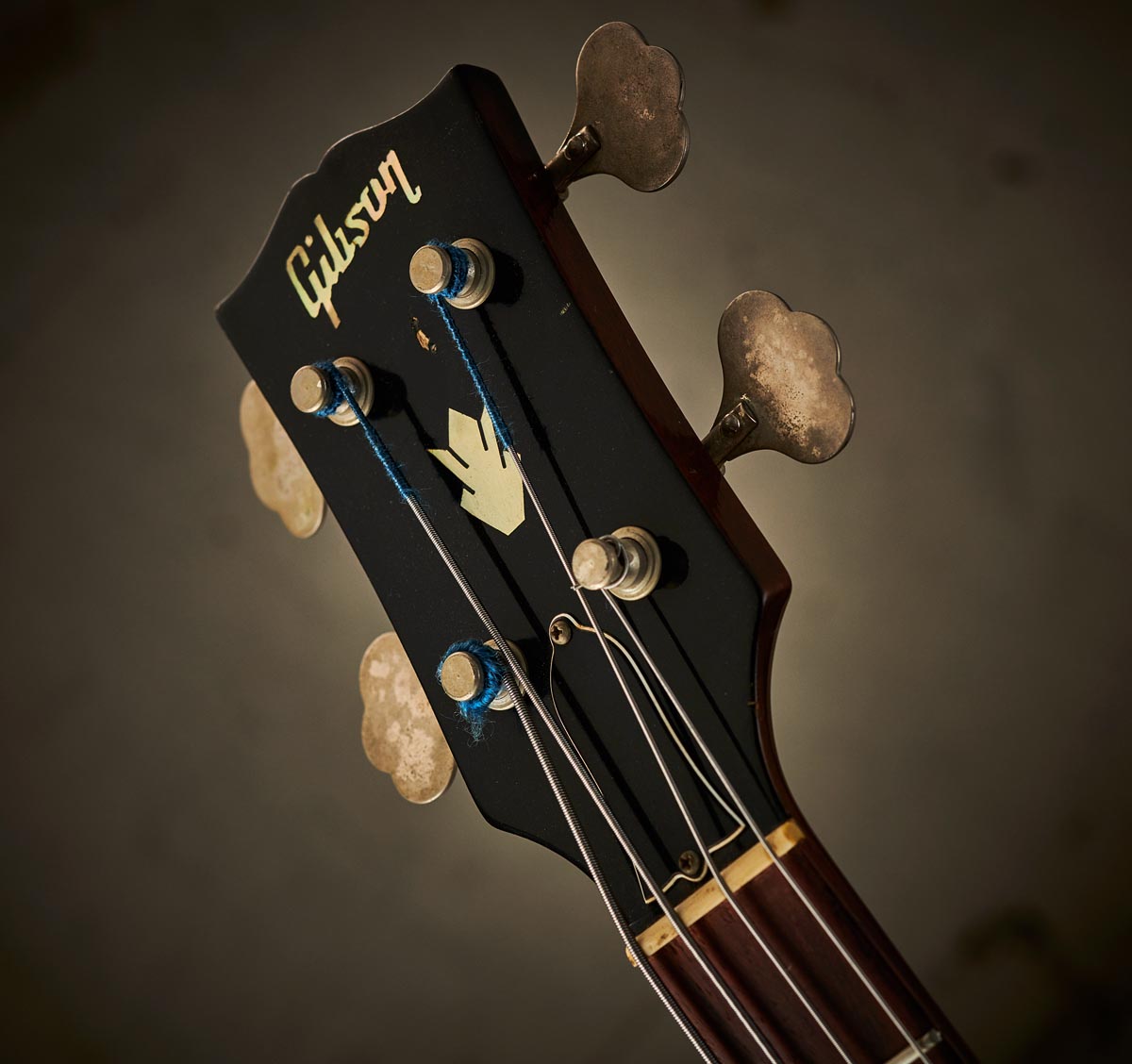
“The Precision Bass sparked a revolution," continues Terry. "It changed everything. Suddenly, a bass player could be much nimbler. It was the same thing with the Telecaster: suddenly, guitarists had easy and full access to all the notes. It wasn’t like it was before where you needed to be a genius bass player to play a complicated bass line. The tools change the rules of the game.
“Before the P-Bass arrived, a lot of bass players more or less played tuba lines, but that changed over time and you see a natural evolution in music from 1951, when the tool became available, to the way Paul McCartney played bass in The Beatles. And you don’t have Paul without James Jamerson, right?”
Leo introduced several major alterations to the Precision Bass over the course of the decade, restlessly working to improve upon his original design.
1958 is the red-letter year in Gibson’s history - I dream about that NAMM show and all the latest things that would’ve been there...
Mat Koehler
“He was constantly tweaking the design,” Terry points out. “No other Fender instrument changes so profoundly over the course of its lifespan during Don and Leo’s tenure. They added the body contours in ’54 when the Strat came out. Then [between ’54 and ’55] they changed the pickguard [from black to white] and the Blonde finish to a Sunburst [as standard].
By 1957, it had changed to a [gold] anodised [aluminium] pickguard and the headstock shape changes, at which point it looks much more like a Stratocaster than a Telecaster. The new [split] humbucking pickup design [introduced in 1957] was a radical departure from the original, which was a variation of the Broadcaster pickup design.”
Hot on Fender’s heels shortly after the later incarnation of the Precision Bass arrived in 1957, Gibson struck back with the announcement of its new electric bass guitar design, the semi-hollowbody EB-2, at the now legendary July 1958 NAMM show in Chicago.
“1958 is the red-letter year in Gibson’s history,” highlights Mat.
“I dream about that NAMM show and all the latest things that would’ve been there: ES guitars, the Flying V, the Explorer… And the EB-2 was a big part of the release as well. Ted McCarty said that in the shows before this, people were snickering that Gibson were still building old man’s instruments – this was mainly coming from the West Coast camp. There was definitely a rift in design between the East Coast and the West Coast.
The clean California designs in the mid- 20th century were a pinnacle of moder minimalism and modernism, whereas Ted felt that Gibson needed to think outside of the box like the rest of the industry and move away from the old-school Michigan furniture building mentality.
Fender had feedback from the marketplace and was looking for something that worked for jazz players
Terry Foster
“The EB-2 is arguably the greatest bass Gibson ever produced. Larry Allers was the man behind the design of both the EB-2 and the [solid-boded] EB-0. He was also responsible for designing the SG. The ‘sidewinder’ or ‘mudbucker’ humbucking pickup was designed by Walter Fuller, not Seth Lover, in Gibson’s electronics division. In terms of number, the shipping figures show that the EB-0 was the most successful bass, but in terms of value as an instrument, I think the EB-2 has the longest enduring appeal and the same goes for the [Epiphone] Rivoli that appeared a year later, in ’59; they’re basically the same thing. The Rivoli is such a cult classic. It actually sold much better than the EB-2.”
Gibson’s new basses had barely made a dent in the market when Fender promptly released its new and advanced follow-up to the Precision Bass in 1960, the Jazz Bass.
“The Jazz Bass mirrors the development of the Jazzmaster,” explains Terry. “Fender had feedback coming from the marketplace and were looking for something that worked for jazz players. Some people find the J-Bass is easier to play because the strings are closer together, and Fender had the idea that the offset body worked better for people sitting down. Leo tweaked that design quite bit as well. The initial J-Bass pickups were essentially Jazzmaster pickups. And the Jazzmaster pickups come from the [model 1000 and 800 pedal] steel guitars. The first [prototype] design had three knobs, then it went to two concentric knobs, before going back to the original design [in 1962].
“But the change from maple to rosewood [across the Fender line from 1959] was not really the same sort of tweaking. That was feedback from the marketplace about the maple necks looking worn after a while. Fender thought people would just change the neck, but they totally miscalculated that one. Once the guitar’s yours, it’s yours, right? Especially when the neck shapes change so much over the years.”
I personally find the Thunderbird to be one of the coolest basses of all time
Mat Koehler
Anxious to cash in on the zeitgeist of the early 60s and boost its sales, Gibson decided to take a leaf from Fender’s book and embrace the automotive industry’s design aesthetics that were so popular with the upwardly mobile electric-guitar-buying youth of the day. The Thunderbird II and IV solid-bodied basses, released in 1963, embodied the angular geometry of classic car design and were suitably available in custom colours – a first for Gibson.
“I personally find the Thunderbird to be one of the coolest basses of all time,” enthuses Mat. “Thunderbirds – and Firebirds – were created because Ted McCarty struck up a friendship with [retired car designer] Ray Dietrich, and the decision to use custom colours was because Fender were doing the same thing. I think the custom colour examples are very cool, but that reverse design was just too hard to produce. It’s much easier to create the nonreverse variety, and I believe that’s mainly why Gibson moved to the non-reverse models [in 1965]. Gibson was able to price the non-reverse models lower and I think they sold much better because of that throughout the late 60s. There was a lot of interesting stuff happening in this industry at Fender and Gibson during that time, and I think some of it was just a direct response to the other.”
“I think the Precision Bass was Leo Fender’s crowning achievement,” concludes Terry. “And his greatest post- Fender achievement is probably the Music Man StingRay bass [introduced in 1976]. You can even argue that had he stayed in charge at Fender, the P-Bass would have morphed into the StingRay bass, because he was constantly tweaking the design and, evidently, that’s where he was headed. It seems the bass is what fascinated Leo the most. So the legend goes, the last thing he worked on at G&L – the day before he died – was a six-string bass.”
- Guitarist would like to thank both Vintage ‘n’ Rare Guitars in Bath and ATB Guitars in Cheltenham
Rod Brakes is a music journalist with an expertise in guitars. Having spent many years at the coalface as a guitar dealer and tech, Rod's more recent work as a writer covering artists, industry pros and gear includes contributions for leading publications and websites such as Guitarist, Total Guitar, Guitar World, Guitar Player and MusicRadar in addition to specialist music books, blogs and social media. He is also a lifelong musician.
“An esoteric boutique vibe, superb ergonomics and a powerful, unique preamp – Tobias is back”: Tobias Growler IV review
“Affordable versions of the three best basses I've ever held in my hands”: Sterling by Music Man completes its trilogy of Joe Dart signature models with a trio of made-to-order basses that cost less than $500


![A black-and-white action shot of Sergeant Thunderhoof perform live: [from left] Mark Sayer, Dan Flitcroft, Jim Camp and Josh Gallop](https://cdn.mos.cms.futurecdn.net/am3UhJbsxAE239XRRZ8zC8.jpg)








